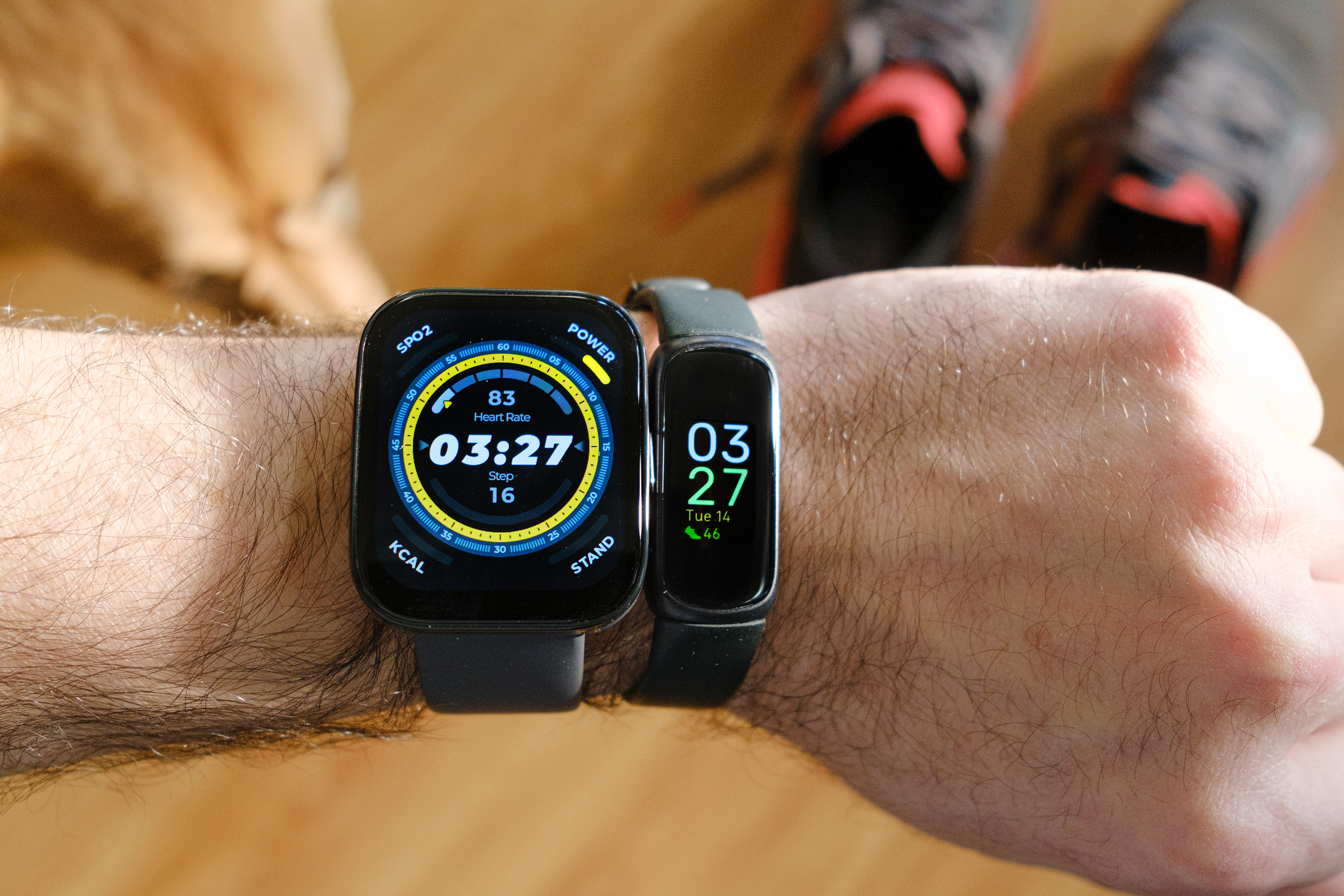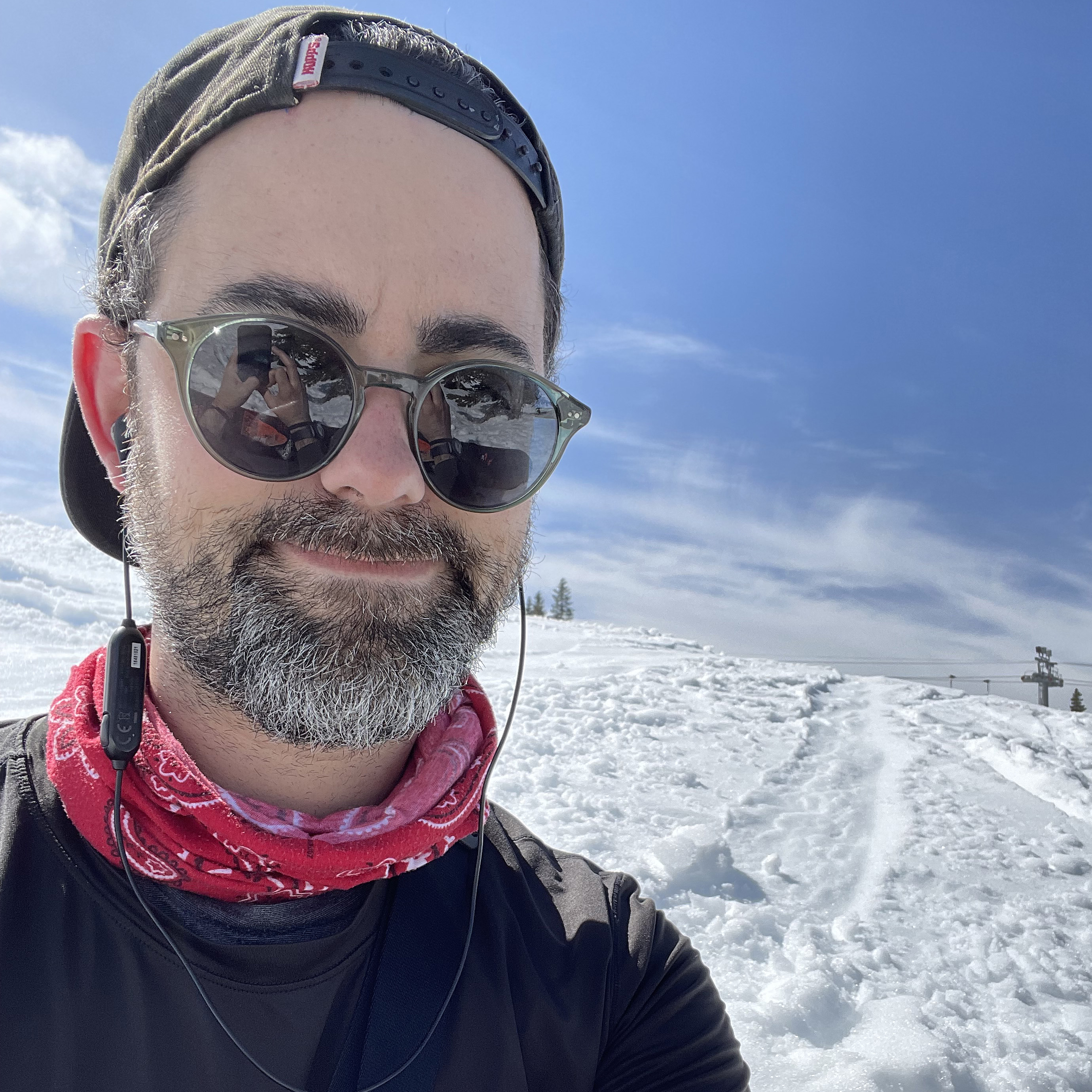I walked 2,800 steps with the Fitbit Inspire 3 and Amazfit Bip 5 — this one was more accurate
A battle of the sub-$100 fitness trackers

There are plenty of solid fitness trackers that won't break the bank, including the Fitbit Inspire 3 and Amazfit Bip 5. The former happens to be my current daily wearer and is also one of the best Fitbits thanks to its fab value proposition.
But how does this fan-favorite Fitbit hold up against the lesser-known Bip 5 in a head-to-head showdown of step count supremacy? Read on.
As a writer who tests fitness trackers for a living, Fitbit is a brand I'm well acquainted with. But Amazfit is relatively new to me. This makes the Bip 5 the first Amazfit wearable I've had the chance to take for a spin.
Saving the in-depth analysis for a forthcoming first impressions review, I'll keep my impressions short and sweet: So far, so good — I've been pleasantly surprised by the look, feel and functionality of this lightweight $90 tracker.
By the way, Amazfit has no connection of any kind to the retail and cloud storage giant, Amazon — if you thought they did, rest assured, you are not alone.
Fitbit Inspire 3 vs. Amazfit Bip 5 — a quick comparison
While the Inspire 3 tends to sit at $99, the Bip 5 generally sells for closer to $89, despite offering a substantially larger display and an onboard GPS. The Bip 5, like the Inspire 3, falls squarely into fitness tracker territory.
But it does have some nice smartwatch-like features not found on this Fitbit model, including the ability to send and receive text and calls via Bluetooth, pay for things, and run a range of useful non-fitness-focused apps.
Get instant access to breaking news, the hottest reviews, great deals and helpful tips.
However, from a fitness tracking and health monitoring standpoint, both devices boast similar capabilities like heart rate, stress, and sleep monitoring, as well as the ability to track a wide range of physical activities. You can also set fitness goals and daily reminders to move. Plus, both devices provide detailed daily wellness reports, as well as plenty of post-workout stats.
Fitbit Inspire 3 vs. Amazfit Bip 5 — accuracy test

If I were a betting man, I probably would have put my money on the Inspire 3 winning this one. After all, it recently beat the pricier Fitbit Charge 6 in a similar head-to-head showdown of step count accuracy. That said, thanks to its GPS, I still expected the Bip 5 to perform admirably. Was I right?
To find out, I strapped the Amazfit to my left wrist and the Fitbit to my right. I also recorded the walk via Strava on my phone for an additional data point. However, this "walk" was accidentally (see also: foolishly) tracked as a bike ride, so I only ended up with accurate distance data. This still proved useful, though (see below).
It’s also worth noting that neither tracking device was set up to piggyback off my phone’s GPS signal (only Strava used it).
With all the devices rolling data capture, I began my walk, manually counting every one hundred steps before stopping, clicking my old-school hand tally counter once, and proceeding. Wash and repeat.
| Header Cell - Column 0 | Fitbit Inspire 3 | Amazfit Inspire 3 | Control |
|---|---|---|---|
| Steps | 2,821 steps | 2,794 steps | 2,800 steps (manual count) |
| Distance | 1.28 miles | 1.44 miles | 1.44 miles (Strava) |
| Calories | 230 calories | 156 calories | n/a |
| Heart rate (average) | 108 bpm | 95 bpm | n/a |
| Pace (average) | 22 minutes, 44 seconds per mile | 20 minutes, 36 seconds per mile | n/a |
Both devices accurately tracked my walk within 21 steps, which is darn good. But the Amazfit Bip 5 was more precise than the Fitbit Inspire 3, coming within six steps of my actual total.
Distance data also varied between the two devices. The Bip 5, using GPS, placed my walk at 1.44 miles. This is the same distance Strava recorded (also via GPS). The Inspire 3, meanwhile, said I walked 1.28 miles.
There is also a discrepancy in calories burned. The Inspire 3 says 230, while the Bip 5 says 156. Which is more correct? It’s hard to know. But these small variations all serve as a gentle reminder that fitness tracking data is rarely 100% flawless. The question is, should you care?
For all but the most hardcore athletes, the answer is no. Most trackers provide accurate enough measurements and metrics to help users gain a better understanding of their well-being, set fitness goals and keep tabs on progress. Simply put, these devices are more about motivation than perfection.
And a little motivation can go a long way: The benefits of any additional physical activity to one’s daily routine cannot be understated. Even if your goals are modest, adding a just few thousand steps a day, for example, can help reduce stress, maintain muscle and more.
Conclusion — Amazfit Bip 5 wins
Back to our head-to-head showdown. Who won? The laurel, of course, goes to the Amazfit Bip 5. When it comes to tracking steps, both devices performed well but Bip was best.
Does this make it a better buy than the Fitbit Inspire 3? Not necessarily. For now, more field testing is needed to understand exactly how well it stacks up against the current value king — factors like battery life, build quality, usability and more will all be considered.
Until then, get those steps in!
More from Tom's Guide
- I walked 3,000 steps with the Fitbit Inspire 3 and G-Shock Move — and one was more accurate
- Apple Watch 10 could detect sleep apnea and hypertension
- I spent a weekend with the G-Shock smartwatch — 7 things that surprised me

Dan Bracaglia is the Tom’s Guide editorial lead for all things smartwatches, fitness trackers and outdoor gear. With 15 years of experience as a consumer technology journalist testing everything from Oura Rings to instant cameras, Dan is deeply passionate about helping readers save money and make informed purchasing decisions. In the past year alone, Dan has assessed major product releases from the likes of Apple, Garmin, Google, Samsung, Polar and many others.
An avid outdoor adventurer, Dan is based in the U.S. Pacific Northwest where he takes advantage of the beautiful surroundings every chance he gets. A lover of kayaking, hiking, swimming, biking, snowboarding and exploring, he also makes every effort to combine his day job with his passions. When not assessing the sleep tracking and heart rate accuracy of the latest tach gadgets, you can find him photographing Seattle’s vibrant underground music community.
